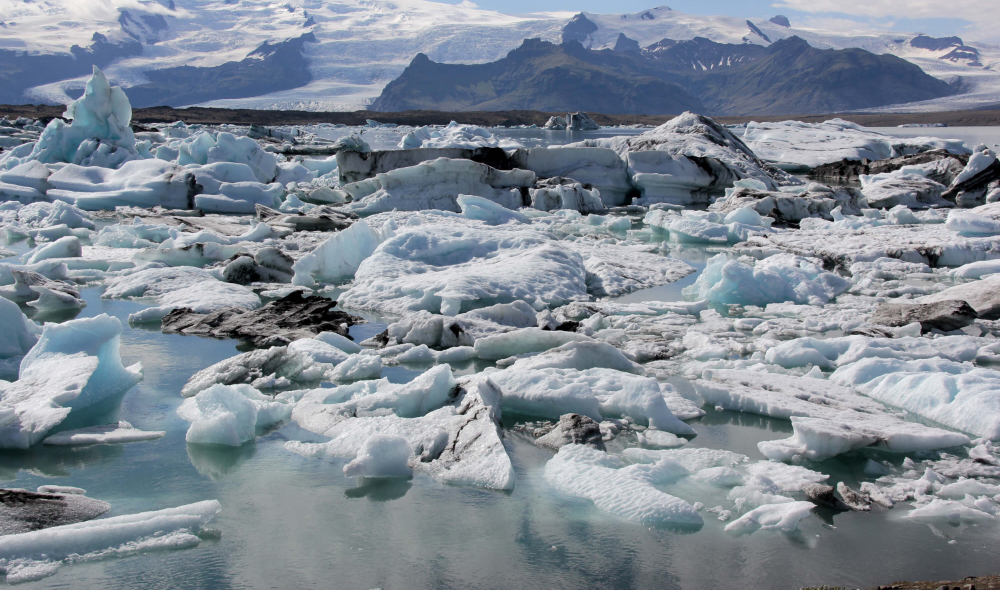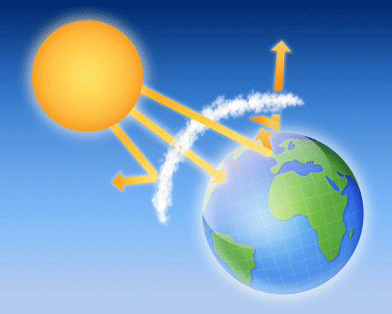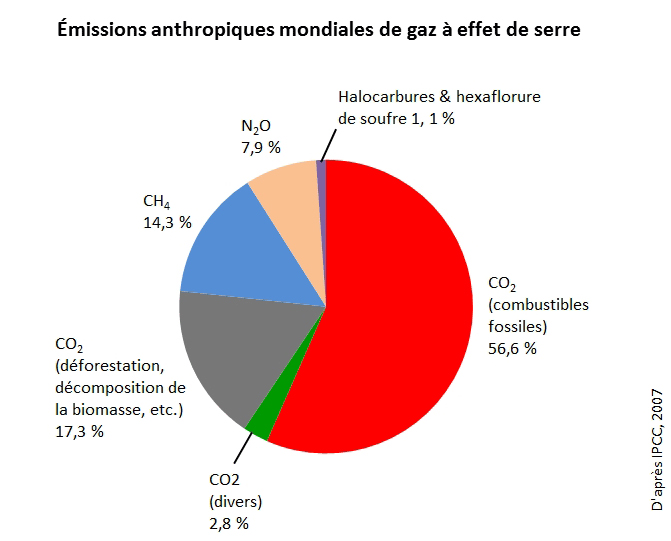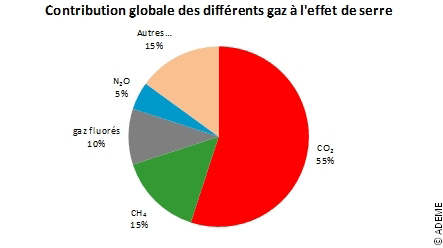
Some serious figures
Since the beginning of the industrial era, Earth’s temperature increased by an average of 0.74°C, with a rise of 0.65°C for the sole period of 1956 to 2006.
A whole series of events results from this rise in global temperature: sea level rose by 10 to 20 centimeters in certain areas; the distribution of precipitation shifted throughout the 20th century; and sea ice surface shrunk rapidly from 8.5 million square kilometer in 1975 to 5.5M sq km in 2010.
Lastly, polar ice caps went thinner, and extreme climate phenomena such as tsunamis or tropical storms became evermore frequent.
Greenhouse effect, the guardian of Earth’s temperature…
Earth absorbs energy from the sun and emanates heat. Some gases, known as the greenhouse gases (GHG), intercept part of the thermal radiation released by Earth, which causes the greenhouse effect. This effect is essential, as it allows the global temperature to stay in a range that is favorable to life on Earth.
…if only it was not disrupted
For more than a century, human activity have generated a lot more GHG emissions than Earth could take, which lead to an increase in the part of radiation that is trapped in the atmosphere and therefore of the greenhouse effect.


The main greenhouse gases
Of all GHGs, CO2 is the greenhouse gas that man produces in the biggest quantities, essentially due to fossil fuel combustion
Carbon dioxide (CO2) mainly comes from the use of fossil fuels (oil, gas, coal…), but other gases also bear responsibility for the greenhouse effect:
Methane (CH4) originates from fossil fuel use, livestock farming, rice culture, and domestic waste;
Halocarbons (CFC, PFC, HFC, HCFC) are used as refrigerants in air conditioning systems and cold production. They are also used for some industrial processes;
Nitrogen (N2O) emanates from the use of industrial fertilizers and fossil fuel combustion;
Sulfur hexafluoride (SF6) is used in electrical appliances (e.g. transformers).
CO2, accountable for most of the greenhouse effect
Even though CO2 does not hold the biggest global-warming potential (GWP), it is emitted in such vast quantities that it becomes the most harmful of GHGs
All gases do not contribute to the greenhouse effect in the same proportions: CO2 on its own is accountable for 55% of Anthropogenic greenhouse effect, before methane (15%), fluoride gases (10%) and nitrogen (5%):





